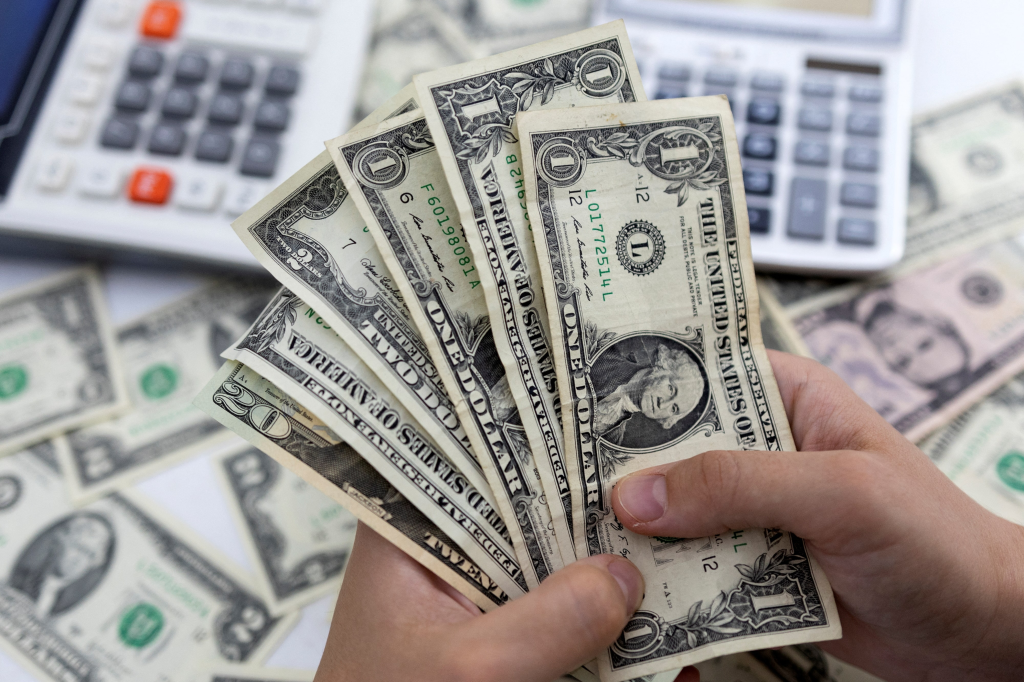The U.S. dollar dropped sharply versus safe-haven currencies and the euro as investors fretted about the economic impact of U.S. tariffs, which spooked world equity markets.
Major stocks indexes sank, while a savage selloff in Treasuries sparked fears foreign funds were fleeing U.S. assets.
President Donald Trump showed no sign of backing off with Washington confirming 104% duties on imports from China would take effect at 12:01 a.m. Eastern Time (0401 GMT), as planned.
China on Wednesday released a White Paper on its trade and economic ties with the United States, reiterating that it would take countermeasures following higher tariffs on Chinese goods.
“One of the reasons why the dollar is suffering the most from additional tariffs on China is that markets feel the lack of immediate substitutes for some Chinese products means even greater inflationary and recessionary risks for the U.S.,” said Francesco Pesole forex strategist at ING arguing that the “‘sell America’ scenario is becoming tangible again.”
The greenback dropped 0.8% against safe haven yen at 145.09 and 0.4% versus the Swiss Franc after hitting a fresh 6-month low at 0.8379.
The euro also jumped, helped by reports Germany’s conservatives had reached a deal with the centre-left Social Democrats to form a government, easing political concerns in the EU’s largest economy.
The single currency added 0.8% to $1.1044, creeping back to last week’s peak at $1.1147.
“U.S 30-year bonds sold off with yields rising and swap spreads surging to a new record above 96 basis points,” said Hauke Siemssen, rate strategist at Commerzbank, mentioning “possible vulnerability of the US Treasury plumbing.”
The U.S. dollar 10-year OIS Treasury swap spreads were last at -100.3 bps.
The dollar was down 0.6% versus the yuan offshore at 7.38, after reaching an all time high at 7.4288, and all eyes are on China’s central bank to see whether it allows a further easing at its daily fix.
“Weakness in the renminbi continues to reflect building speculation over the potential for bigger devaluation in response to the intensifying trade war between the US and China,” said Lee Hardman, senior currency analyst at MUFG.
Worries about a U.S. downturn were pressuring the dollar elsewhere as markets returned to pricing 104 bps of rate cuts from the Federal Reserve this year.
“Our top FX expression is to be long yen given U.S. stagflation fears, exacerbated by Trump’s aggressive reciprocal tariffs and tit-for-tat escalations, and the sharp selloff in equities,” wrote analysts at Nomura in a note.



